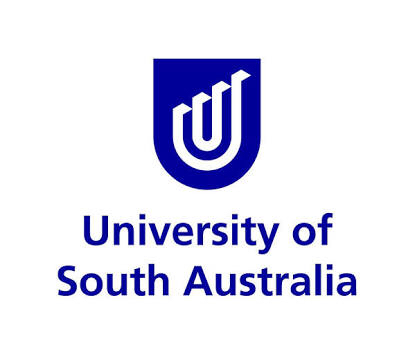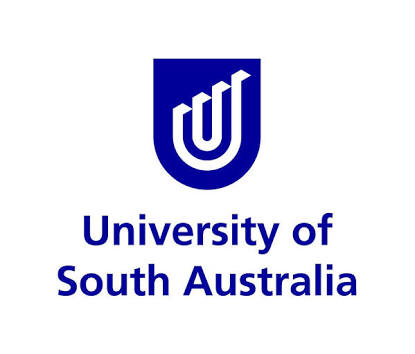Title Page
Audit Information
-
Conducted on
-
Prepared by
-
Location
Administrative and Miscellaneous
-
Have the current corrective actions been reviewed for this lab prior to commencing this inspection?
-
If there has been any known incidence in this area, have the corrective actions been completed?
-
Are records kept of trained equipment operators?
-
Are records kept of equipment maintenance and servicing/testing of equipment?
-
Are all gas taps labelled appropriately?
-
Are the safety showers and eye wash stations being tested monthly?
-
Is the signage on the lab door correct, adequate and up to date?
-
Is work with open flames in the lab (eg. Bunsen burners) appropriately controlled and risk assessed?
-
Are occupants in the area aware of correct manual handling techniques and carrying aids?
Housekeeping
-
Are floors clean, dry, and free from slip/trip hazards?
-
Is the workplace free from accumulation of equipment, redundant chemicals, boxes, contaminated waste or rubbish?
-
Is shelving stable, free of extraneous material and not too high?
-
Are racks labelled with weight limits, safely installed and not overloaded?
-
Are walkways, exits and corridors free of obstruction?
-
Are chemical storage facilities in good condition?
-
Are suitable trolleys, lifters and steps available for the tasks performed in this lab? If yes, are they free from wear and damage?
-
Is all flexible hosing securely fixed in place and in good condition?
-
Are engineering controls being adequately maintained?
Fire
-
Are all fire extinguishers/equipment suitable, appropriately located, mounted and identified?
-
Have all fire extinguishers been checked within the last 6 months?
-
Have fire hose reels (if present in the lab) been checked within the last 6 months?
-
Visually, do the fire sprinklers and/or detector heads appear free from damage and obstruction (i.e. items that could restrict water spraying from sprinklers)?
Exits
-
Are exit signs illuminated and clearly visible?
-
Are all exit doors unlocked?
Environmental
-
Are waste manifests and disposal procedures followed?
-
Is chemical liquid waste segregated and stored correctly bunded away from drains?
-
Is the sink in the lab in good working order (condition, drainage etc)?
-
Are all lights working and lighting levels suitable for tasks?
-
Is ventilation adequate?
-
Are there acceptable atmospheric contamination levels (fumes, dust, vapours)?
Interactive and Virtual Environment
-
Are there any interactive and/ or virtual Environment in this area?
-
Is there enough clear space around for users to safely work while in an interactive environment?
-
Are trip hazards from tethered VR like cabling, furniture or other obstacles adequately controlled?
-
Is a guard rail set up to alert users when they are close to leaving the safe play area?
-
Is there adequate space and furniture for users to sit and recover?
-
Is there adequate railing around the project space?
-
Are hygiene measures adequately carried out?
-
Are light switches adequately accessible?
-
Are exit signs clearly marked and illuminated?
-
Are users notified of side effects such as seizures, disorientation and dizziness?
Chemical Safety
-
Are chemicals used and/or stored in this laboratory?
-
Are there any flammable solids (Class 4.1) or substances that are liable to spontaneously combust (Class 4.2) in the lab? If yes, are they labelled appropriately with opening and expiry date? Please identify using Chemwatch and clearly identify with coloured stickers.<br>
-
Has the annual chemical stocktake for this lab area been completed in the last 12 months? (All chemicals in the lab MUST be present in the Chemwatch manifest)
-
Are all chemicals and samples in the lab correctly labelled with legible chemical name, date and owner?
-
Are chemicals stored in compatible containers?
-
Has a chemical incompatibility check been performed within the last year to check if all chemicals located in storage areas compatible? (ChemWatch GoldFFX Incompatibility Report filter)
-
Are permits obtained to store and use controlled substances?
-
Are stored chemicals bunded and not near drains?
-
Is the base section (bund) of chemical cabinets free of stored chemicals?
-
Is the area free of any leakage of hazardous chemicals?
-
Is storage of chemicals in fume cupboards avoided?
-
Are refrigerators in laboratory environments free of any foods, drinks or other human consumables?
-
Are all chemical waste containers appropriately labelled with Class Diamonds?
Liquid Nitrogen
-
Is liquid nitrogen used in this laboratory?
-
Are only compliant purpose built liquid nitrogen dewars used in this lab (no modified thermos' or plastic containers)?
-
Have all small (<30L) pressurised liquid nitrogen dewars in the lab been inspected for signs of external damage and ice build-up? (any identified concerns please contact the FII Technical Team immediately)
Flammable Liquids
-
Are there flammable liquids stored in this laboratory?
-
Are solvents stored in appropriate containers?
-
Are solvents separated from corrosives?
-
Are appropriate warning signs placed on the flammables cabinet?
-
Are dry powder fire extinguishers accessible?
-
Are flammables, if kept in refrigeration, only stored in suitable purpose-built laboratory fridges or freezers (not in domestic fridges)?
Compressed Gas Cylinders
-
Are compressed gas cylinders located in this laboratory?
-
Are cylinders secured by brackets or chains?
-
Is the gas name/label on the shoulder of each cylinder clearly legible?
-
Are fuel gas cylinders (eg. hydrogen, acetylene) separated from oxidising gas cylinders by a minimum of 3m (connection to connection)?
-
Are gas cylinder regulators and manifolds free from damage and functioning correctly?
-
Are empty cylinders separate from full cylinders and clearly identified?
-
Are flammable gas (i.e. Class 2.1 acetylene) cylinders that are not in use stored outside of the building?
-
Are gas cylinder valves closed when not in use?
-
Does testing for gas leaks occur when regulators are connected to the gas cylinders?
-
Are all gas cylinders stored in a well ventilated area?
Fume Cupboards
-
Are fume cupboards located in this laboratory?
-
Are electrical service outlets (i.e. power points; power boards) located outside of the fume hood?
-
Are emergency isolators accessible for electrical and gas and are they clearly marked?
-
Are there warning signs indicating a maximum of 2.5 litres of flammable liquid in the fume hood at any given time?
-
Are fume scrubbers installed where appropriate?
-
Do fume cupboard scrubbers have sufficient supplies (1/3 at least) of the neutralising solution?
-
Are fire extinguishers located within 4 metres of fume cupboard?
-
Are the fume cupboards regularly tested, including for a face velocity of 0.5 metres per second?
-
Are fume cupboards and surrounds kept tidy with no disturbances to airflow?
Biological Safety
-
Is biological work conducted in this laboratory?
-
Are contaminated waste procedures developed and implemented?
-
Are sharps (needles, syringes, pipettes, scalpels, razors, etc) stored appropriately?
-
Are risk group category and containment procedures in place and adhered to?
-
Are disposable gloves available and used when specimens are handled?
-
Is appropriate decontamination of work surfaces in practice?
-
Are recombinant DNA project work assessed and certified by the University’s Institutional Biosafety Committee (IBC) and by the Human Research Ethics Committee (if needed)?
-
Are recombinant DNA laboratory areas inspected and certified by the University’s Institutional Biosafety Committee (IBC)
-
Is aerosol production minimised and contained?
Radioactive Materials, Ionising Radiation, Non-Ionising Radiation and Laser Safety
-
Is work with radioactive materials conducted in this laboratory?
-
Are specific areas designated for radiation procedures?
-
Is appropriate monitoring equipment readily available and operational?
-
Are personal monitoring procedures in place?
-
Is adequate and sufficient shielding provided?
-
Is radioactive material securely stored?
-
Are absorbent materials available to contain spills?
-
Are radioactive waste/storage procedures in place?
-
Is appropriate licencing obtained for the use and storage of radioactive sources?
-
Are personnel using radioactive materials adequately trained?
-
Is work with ionising radiation conducted in this laboratory?
-
Are specific areas designated for radiation procedures?
-
Is appropriate monitoring equipment readily available and operational?
-
Are personal monitoring procedures in place?
-
Is adequate and sufficient shielding provided?
-
Is appropriate licencing obtained to operate ionising radiation apparatus?
-
Are personnel using ionising radiation apparatus adequately trained?
-
Is work with non-ionising radiation conducted in this laboratory?
-
Are specific areas designated for radiation procedures?
-
Is appropriate monitoring equipment readily available and operational?
-
Are personal monitoring procedures in place?
-
Is adequate and sufficient shielding provided?
-
Is work with lasers conducted in this laboratory?
-
Are specific areas designated for laser procedures?
-
Is appropriate monitoring equipment readily available and operational?
-
Is adequate and sufficient barriers provided?
-
Is appropriate PPE available to carry out work with laser?
-
Are personnel appropriately trained for using the applicable class of lasers?
Electrical Installations
-
Is in-service inspection, testing and tagging of portable electrical equipment done in accordance with the procedure for Electrical Equipment Inspection and Testing?
-
Are adequate power points available, unobstructed and in good condition?
-
Are power leads in good condition, no trip hazards?
-
Are emergency shutdown switches in the area clearly marked and checked within the last 12 months?
-
If there is a distribution board in the area, is it locked?
-
Are temporary wiring and piggyback adaptors avoided? AND are excessive use of extension cords and power boards avoided?
-
If power boards are being used, are they of high quality possessing individual switches for each plug and are they surge protected?
-
Have all hotplate power cables been set-up correctly and mounted in a way that will prevent them from contacting the hotplate surface?
-
Is an appropriate fire extinguisher (ie. CO2 or dry powder), adjacent to any electrical switchboards in the area?
-
Have electrical ignition sources been controlled in flammable environments (eg intrinsically safe fittings/equipment)?
-
Have electronic timers been fitted to all items that are required to be charged afterhours or for prolonged periods of time?
Plant
-
Are plants used in this space?
-
Are emergency stop switches accessible and red in colour?
-
Have plant interlock/E-Stop test records been sighted?<br>
-
Are moving parts, belt drives, shafts, fans appropriately guarded?
-
Are plants free from obstruction?
-
Is there adequate distance between plants to allow good ventilation and servicing?
-
Are operating instructions/safety signs adequate and clear?
Equipment
-
Are equipment used in this space?
-
Are equipment free from any visible damage (i.e. centrifuge rotors/buckets)?
-
Are emergency stop switches accessible and red in colour?
-
Have equipment interlock/E-Stop test records been sighted?<br>
-
Are equipment free from obstruction?
-
Is there adequate distance between equipment to allow good ventilation and servicing?
-
Are operating instructions/safety signs adequate and clear?
Personal Protective Equipment (PPE)
-
Is all correct PPE readily available when required?
-
Is PPE stored and maintained correctly?
First Aid
-
Are there trained first aid personnel?
-
Are first aid personnel identifiable?
-
Are there first aid kits available and adequately stocked for the types of hazards and level of risk ie chemical, thermal and abrasive burns?
-
Have the first aid kit contents and expiry dates been checked against the WHS10 first aid kit form in the past 12 months? If you need any assistance, please contact the Technical Team.
Emergency Procedures
-
Have emergency procedures been established for specific hazardous circumstances including spills?
-
Are lab users aware of response procedures for minor and major spills and is there an adequate and suitably stocked spill kit available in the lab for the types of spills anticipated?
-
Are emergency plans and contact numbers displayed?
-
Are Chemwatch manifests and UniSA Emergency Response Booklets available in accessible areas for staff, students and emergency personnel?
Alarms and Testing
-
Is a local response protocol in place for specialised alarms, eg: O2 depletion; CO2?
Miscellaneous
-
Has this inspection checklist covered all WHS questions required for this laboratory? If No, please type what has been missed








